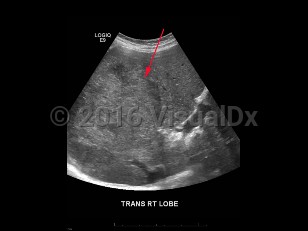Hepatocellular carcinoma (HCC) is the most common primary malignancy of the liver in adults over the age of 65 years worldwide and is considered the third leading cause of cancer death. In the United States, the ratio of incidence of HCC between men and women is 2.5 to 1. The incidence and sex ratio of HCC varies regionally, and the majority of cases are diagnosed in developing nations. The incidence of HCC is highest in East Asia, Southeast Asia, and sub-Saharan Africa where disease is most commonly associated with chronic viral
hepatitis B or
C infection. Major risk factors for developing HCC include
cirrhosis, chronic viral hepatitis, dietary aflatoxin,
diabetes,
metabolic dysfunction-associated steatotic liver disease (MASLD) (nonalcoholic fatty liver disease [NAFLD]), and
alcohol abuse. Children are rarely affected; the only known risk factor in this population is chronic hepatitis B carrier status. In the United States, data suggests that the incidence of HCC may have remained stable since 2013, which may be attributed to improvements in antiviral therapy.
Patients are typically asymptomatic in the early stages of the disease. In the United States, right upper quadrant abdominal pain, weight loss, and malaise are common presenting symptoms. Jaundice, ascites, and hepatosplenomegaly may occur in patients with bile duct obstruction. Late findings include
portal hypertension,
abdominal bleeding,
encephalopathy, and
liver failure.
The Barcelona Clinic Liver Cancer algorithm is widely used for HCC staging:
- Very early stage (0): Solitary nodules ≤ 2 cm. Treatment includes ablation or resection.
- Early stage (A): Solitary nodule > 2 cm OR 2-3 nodules all ≤ 3 cm. Treatment options include resection, transplantation, or ablation.
- Intermediate stage (B): > 3 nodules OR ≥ 2 nodules if any are > 3 cm. Treat with chemo-embolization.
- Advanced stage (C): Macrovascular invasion OR extrahepatic spread. Treat with systemic therapies.
- Terminal stage (D): End-stage liver function. Nontransplantable HCC. Supportive care.



